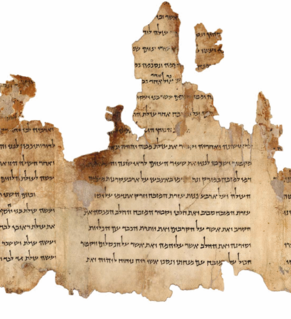 W
WHebrew is a Northwest Semitic language native to Israel. In 2013, Modern Hebrew was spoken by over nine million people worldwide. Historically, it is regarded as the language of the Israelites, Judeans and their ancestors; however, the language was not referred to by the name "Hebrew" in the Tanakh itself. The Mishnah Megillah refers to the Hebrew language as Ashurit meaning Assyrian, which is a metonym derived from the name of the alphabet. The earliest examples of written Paleo-Hebrew date to the 10th century BCE. Hebrew belongs to the Northwest Semitic branch of the Afroasiatic language family, and is the only Canaanite language still spoken and the only truly successful example of a revived dead language, and one of only two Northwest Semitic languages still spoken, the other being Aramaic, which is spoken primarily by Christian Assyrians and Syriac-Arameans, the Gnostic Mandeans as well as some Near Eastern Jews.
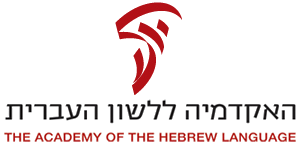 W
WThe Academy of the Hebrew Language was established by the Israeli government in 1953 as the "supreme institution for scholarship on the Hebrew language in the Hebrew University of Jerusalem of Givat Ram campus."
 W
WItamar Ben-Avi was the first native speaker of Hebrew in modern times. He was a journalist and Zionist activist.
 W
WEliezer Ben‑Yehuda was a Hebrew lexicographer and newspaper editor. He was the driving force behind the revival of the Hebrew language in the modern era.
 W
WNetiva Ben Yehuda was an Israeli author, editor and media personality. She was a commander in the pre-state Jewish underground Palmach.
 W
WBethel is the name of a place often used in the Hebrew Bible. It is first mentioned in Genesis 12:8 as being near where Abram pitched his tent. Later in Genesis, it is the location where Jacob dreamt of seeing angels and God, and which he therefore named Bethel, "House of God." The name is further used for a border city located between the territory of the Israelite tribe of Benjamin and that of the tribe of Ephraim, which first belonged to the Benjaminites and was later conquered by the Ephraimites.
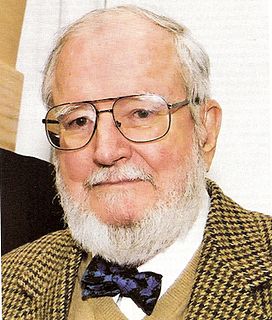 W
WFrank Moore Cross Jr. (1921–2012) was the Hancock Professor of Hebrew and Other Oriental Languages Emeritus at Harvard University, notable for his work in the interpretation of the Dead Sea Scrolls, his 1973 magnum opus Canaanite Myth and Hebrew Epic, and his work in Northwest Semitic epigraphy. Many of his essays on the latter topic have since been collected in Leaves from an Epigrapher's Notebook.
 W
WGovernment Naming Committee is a public committee appointed by the Government of Israel, which deals with the designation of names for communities and other points on the map of Israel, and the replacement of Arabic names that existed until 1948 with Hebrew names. The committee's decisions bind state institutions.
 W
WAsher Zvi Hirsch Ginsberg, primarily known by his Hebrew name and pen name Ahad Ha'am, was a Hebrew essayist, and one of the foremost pre-state Zionist thinkers. He is known as the founder of cultural Zionism. With his secular vision of a Jewish "spiritual center" in Israel, he confronted Theodor Herzl. Unlike Herzl, the founder of political Zionism, Ha'am strived for "a Jewish state and not merely a state of Jews".
 W
WHebraization of Palestinian place names refers to the replacement of Arabic-language place names with Hebrew-language place names throughout different periods: under the British Mandatory Palestine regime; after the establishment of Israel following the 1948 Palestinian exodus and 1948 Arab–Israeli War; and subsequently in the Palestinian territories occupied by Israel in 1967. A 1992 study counted c.2,780 historical locations whose names were Hebraized, including 340 villages and towns, 1,000 Khirbat (ruins), 560 wadis and rivers, 380 springs, 198 mountains and hills, 50 caves, 28 castles and palaces, and 14 pools and lakes.
 W
WThe Hebraization of surnames is the act of adopting a Hebrew surname in exchange for a diaspora name. For many diaspora Jews who migrated to Israel, taking a Hebrew surname was a way to erase remnants of their diaspora experience and to assimilate into a new shared Jewish identity with Mizrahi Jews and Palestinian Jews and later as Israeli Jews.
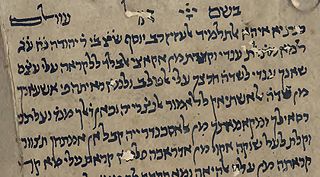 W
WMedieval Hebrew was a literary and liturgical language that existed between the 4th and 19th century. It was not commonly used as a spoken language, but mainly in written form by rabbis, scholars and poets. Medieval Hebrew had many features that distinguished it from older forms of Hebrew. These affected grammar, syntax, sentence structure, and also included a wide variety of new lexical items, which were either based on older forms or borrowed from other languages, especially Aramaic, Greek and Latin.
 W
WMishnaic Hebrew is a form of the Hebrew language that is found in the Talmud. The forms of the Hebrew in the Talmud can be divided into Classical Hebrew for direct quotations from the Hebrew Bible, and Mishnaic Hebrew can be further sub-divided into Mishnaic Hebrew proper, which was a spoken language, and Amoraic Hebrew, which was a literary language only.
 W
WModern Hebrew or Israeli Hebrew, generally referred to by speakers simply as Hebrew, is the standard form of the Hebrew language spoken today. Spoken since ancient times, Hebrew, a member of the Canaanite branch of the Semitic language family, was supplanted as the Jewish vernacular by the western dialect of Aramaic beginning in the third century BCE, though it continued to be used as a liturgical and literary language. It was revived as a spoken language in the 19th and 20th centuries and is the official language of Israel.
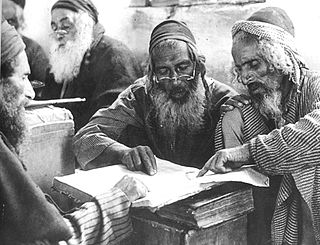 W
WYemenite Hebrew, also referred to as Temani Hebrew, is the pronunciation system for Hebrew traditionally used by Yemenite Jews. Yemenite Jews brought their language to Israel through immigration. Their first organized immigration to the region began in 1882.
 W
WHebrew and Aramaic papyri have increasingly been discovered from the 1960s onwards, although these papyri remain rare compared to papyri written in Koine Greek and Demotic Egyptian. The most valuable and religious texts were written on leather scrolls, parchment - such as the literary texts from Masada and Qumran, while papyrus was employed for cheaper, domestic use.
 W
WHebrew Book Week is an annual week-long event in Israel celebrating Hebrew literature.
 W
WA Hebrew keyboard comes in two different keyboard layouts. Most Hebrew keyboards are bilingual, with Latin characters, usually in a US Qwerty layout. Trilingual keyboard options also exist, with the third script being Arabic or Russian, due to the sizable Arabic- and Russian-speaking populations in Israel.
 W
WHebrew literature consists of ancient, medieval, and modern writings in the Hebrew language. It is one of the primary forms of Jewish literature, though there have been cases of literature written in Hebrew by non-Jews. Hebrew literature was produced in many different parts of the world throughout the medieval and modern eras, while contemporary Hebrew literature is largely Israeli literature. In 1966, Agnon won the Nobel Prize for Literature for novels and short stories that employ a unique blend of biblical, Talmudic and modern Hebrew, making him the first Hebrew writer to receive this award.
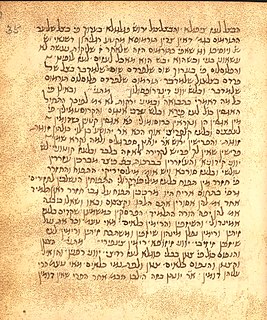 W
WIsaac ben Melchizedek, also known by the acronym Ribmaṣ, was a rabbinic scholar from Siponto in Italy, and one of the first medieval scholars to have composed a commentary on the Mishnah, although today only Seder Zera'im survives. Elements of the Mishnaic order of Taharot are also cited in his name by the Tosafists, but the complete work is no longer extant.
 W
WIsraeli literature is literature written in the State of Israel by Israelis. Most works classed as Israeli literature are written in the Hebrew language, although some Israeli authors write in Yiddish, English, Arabic and Russian.
 W
WThere are several Jewish and Hebrew greetings, farewells, and phrases that are used in Judaism, and in Jewish and Hebrew-speaking communities around the world. Even outside Israel, Hebrew is an important part of Jewish life. Many Jews, even if they do not speak Hebrew fluently, will know several of these greetings.
 W
WThe Kaufmann manuscript is a complete Hebrew manuscript of the Mishnah. It is part of the collection of David Kaufmann located at the Library of the Hungarian Academy of Sciences in Budapest.
 W
WKTAV Publishing House is a publishing house located in Brooklyn, New York. Ktav means "to write" in Hebrew.
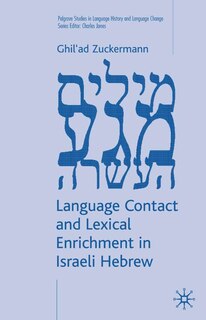 W
WLanguage Contact and Lexical Enrichment in Israeli Hebrew is a scholarly book written in the English language by linguist Ghil'ad Zuckermann, published in 2003 by Palgrave Macmillan. The book proposes a socio-philological framework for the analysis of "camouflaged borrowing" such as phono-semantic matching. It introduces for the first time a classification for "multisourced neologisms", new words that are based on two or more sources at the same time.
 W
WLashon Hakodesh, also spelled L'shon Hakodesh or Leshon Hakodesh, is a Jewish term and appellation attributed to the Hebrew language, or sometimes to a mix of Hebrew and Aramaic, in which its religious texts and prayers were written, and served, during the Medieval Hebrew era, for religious purposes, liturgy and Halakha – in contrary to the secular tongue, which served for the routine daily needs, such as the Yiddish language.
 W
WYaakov Meir (1856–1939), was an Orthodox rabbi, and the first Sephardic Chief Rabbi appointed under the British Mandate of Palestine. A Talmudic scholar, fluent in Hebrew as well as five other languages, he enjoyed a reputation as one of Jerusalem's most respected rabbis.
 W
WThe system of Hebrew numerals is a quasi-decimal alphabetic numeral system using the letters of the Hebrew alphabet. The system was adapted from that of the Greek numerals in the late 2nd century BCE.
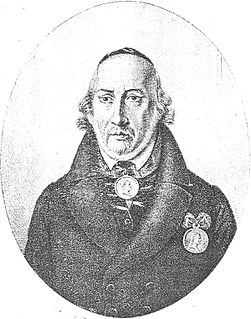 W
WJoseph Perl, was an Ashkenazi Jewish educator and writer, a scion of the Haskalah or Jewish Enlightenment. He wrote in Hebrew, Yiddish, and German; in 1819, he published the first Hebrew novel. Born and raised in the Austrian province of Galicia shortly after its annexation in the first partition of Poland, he was a follower of Hasidism in his youth. Later, he turned against Hasidism and became a proponent of Jewish emancipation and Haskalah, although he remained an observant Jew. He is best known for his many writings on Hasidism, ranging from critical treatises to parody.
 W
WElisha Qimron is an academic in the study of ancient Hebrew, in which he took his Doctor of Philosophy in 1976 at the Hebrew University of Jerusalem. His dissertation was on The Hebrew of the Dead Sea Scrolls.
 W
WIn Hebrew orthography the rafe, or more commonly spelt raphe, is a diacritic, a subtle horizontal overbar placed above certain letters to indicate that they are to be pronounced as fricatives.
 W
WRevivalistics: From the Genesis of Israeli to Language Reclamation in Australia and Beyond is a scholarly book written by linguist and revivalist Ghil'ad Zuckermann. It was published in 2020 by Oxford University Press. The book introduces revivalistics, a trans-disciplinary field of enquiry surrounding language reclamation, revitalization and reinvigoration.
 W
WHebrew uses the Hebrew alphabet with optional vowel diacritics. The romanization of Hebrew is the use of the Latin alphabet to transliterate Hebrew words.
 W
WThe Samaritan script is used by the Samaritans for religious writings, including the Samaritan Pentateuch, writings in Samaritan Hebrew, and for commentaries and translations in Samaritan Aramaic and occasionally Arabic.
 W
WThe Exhaustive Concordance of the Bible, generally known as Strong's Concordance, is a Bible concordance, an index of every word in the King James Version (KJV), constructed under the direction of James Strong. Strong first published his Concordance in 1890, while professor of exegetical theology at Drew Theological Seminary.
 W
WJohn Strugnell became, at 23, the youngest member of the team of scholars led by Roland de Vaux, formed in 1954 to edit the Dead Sea Scrolls in Jerusalem. He was studying Oriental languages at Jesus College, Oxford when Sir Godfrey Rolles Driver, a lecturer in Semitic philology, nominated him to join the Scrolls editorial team.
 W
WEmanuel Tov is emeritus Professor in the Department of Bible at the Hebrew University of Jerusalem.
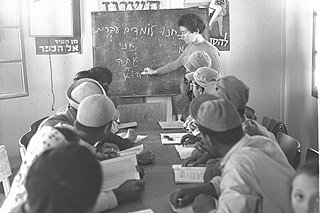 W
WAn ulpan is an institute or school for the intensive study of Hebrew. Ulpan is a Hebrew word meaning "studio", "teaching", or "instruction".
 W
WThe war of the languages was a heated debate in Ottoman Palestine over the language of instruction in the country's new Jewish schools. This "language war" was a cornerstone event in the history of the revival of the Hebrew language.